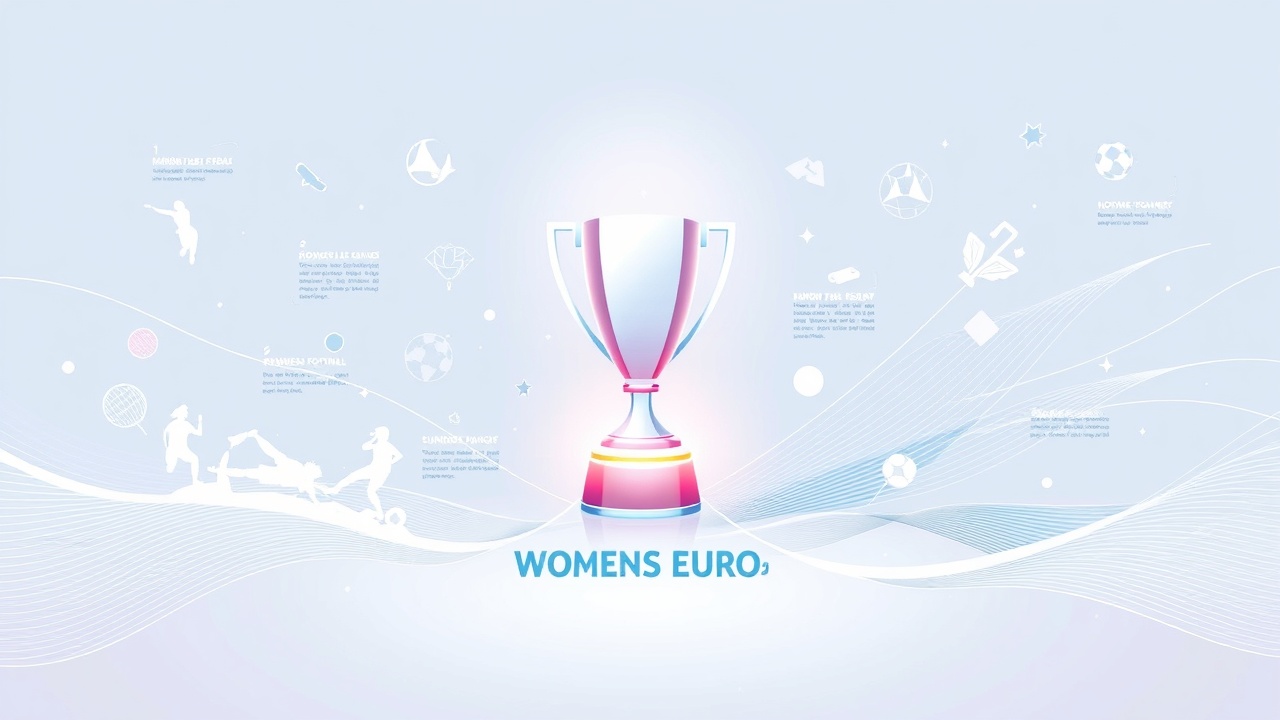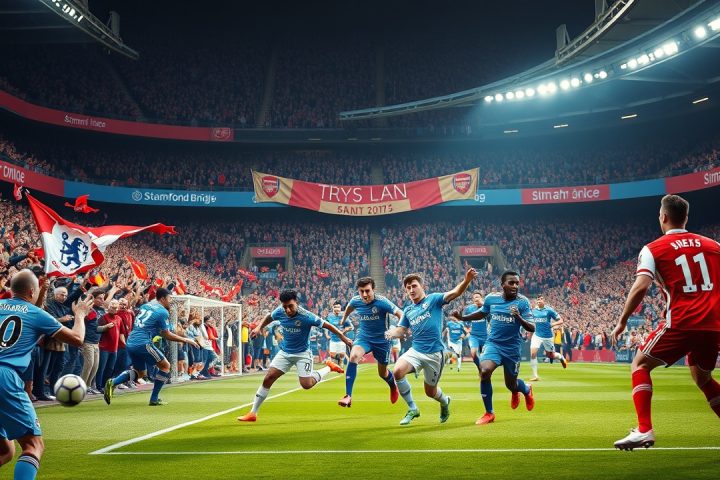Women’s European Championship: A Treasure Trove of Facts
As the excitement builds for the upcoming Women’s European Championship set to commence in Switzerland on July 2, 2025, it’s an opportune moment to dive into a treasure trove of intriguing facts about this prestigious tournament, which has been captivating football enthusiasts since its inception in 1984. Below, we explore captivating details about this celebrated event, organized by the alphabet.
Key Highlights
A is for Angerer: Nadine Angerer, the goalkeeping coach of Switzerland and a former custodian for Germany, shines as a legendary figure in this championship’s history. She is one of only two players—alongside Birgit Prinz—to have secured five winners’ medals. Her crowning achievement came in the 2013 final, where her remarkable saves during penalties were instrumental in Germany’s victory over Norway. Angerer also made history as the first female goalkeeper to win the FIFA World Player of the Year in 2014.
B is for Breakthrough: Italy has consistently shown its prowess in this competition, appearing in every tournament since 1984 except one—marking its 13th appearance in 2025. However, they remain in search of their first title, having reached the finals multiple times without success.
C is for Coultard: England’s Gillian Coultard holds the remarkable record for the most appearances in Women’s Euros history, totaling 61 across tournaments and qualifiers. She was part of the Lionesses’ squad that faced Sweden in the very first final in 1984 and became the first English woman to achieve 100 caps, later being honored with an MBE for her contributions to the sport.
D is for Die Nationalelf: Germany has been the undisputed powerhouse of the Women’s Euros, boasting eight titles, including a streak of six consecutive championships from 1995 to 2013. Their dominance is underscored by record highs in match wins, goals scored, and overall goal difference.
E is for Evolution: Initially called the “European Competition for Representative Women’s Teams,” the tournament was first held in 1984 and received its current title in 1990, reflecting a growing acceptance of women’s football.
F is for First-timers: Several teams have achieved victory in the Euros during their inaugural participation: Sweden in 1984, Norway in 1987, and Germany in 1989, establishing a pattern of elite performances quickly translating into championships.
G is for Groundhog Day: Germany and Norway have faced off in the finals on four separate occasions, with Germany consistently coming out on top. Their storied rivalry represents one of the most frequently contested matchups in Euros finals history.
H is for Hat-trick Heroes: Only six players have managed to record a hat-trick in the tournament’s history. Notably, Lena Videkull’s 17-minute hat-trick in 1995 remains unprecedented.
I is for In the Dugout: In the realm of coaching, Tina Theune-Meyer stands out as the most triumphant coach in the history of the Euros, leading her teams to swift victory in the late ‘90s and early 2000s. Furthermore, Sarina Wiegman is acclaimed for being the only coach to have won the title with two different national teams.
J is for Joint-top Scorers: Germany’s Inka Grings and Birgit Prinz are the leading goal scorers in Euros, each netting ten goals. Grings’ scores during the 2005 and 2009 tournaments highlight her remarkable shooting ability.
K is for Knockout Queens: In terms of knockout stage matches, Germany boasts two of the most successful players: Doris Fitschen and Prinz, who competed in 11 knockout games, showcasing their enduring influence in the tournament.
L is for Loss: After their final loss to Germany in 2013, Norway faced an unexpected downturn, exiting the 2017 tournament without scoring, despite having star forward Ada Hegerberg on their roster.
M is for Morace: The Italian forward Carolina Morace holds the title of Euros’ all-time leading goal scorer. Aside from her accolade in football, she has also transitioned into politics, becoming a member of the European Parliament.
N is for Neid: Silvia Neid embodies the legacy of Germany’s footballing success, participating in all eight European Championship victories as both a player and coach, and earning accolades including the FIFA Women’s Coach of the Year multiple times.
O is for Oldest Player: Making history in 2013, Sandrine Soubeyrand became the oldest player to participate in the tournament, playing at 39 years and 340 days old, capping off a distinguished playing career.
P is for Pellerud: Even Pellerud, the former coach of Norway, led his team to a historic victory in 1993 and played a pivotal role in their World Cup triumph two years later.
Q is for Qualification Changes: The tournament evolved from its initial structure with only four participating teams from 1984 to 1995 to featuring 16 in more recent editions, showcasing the growth and popularity of women’s football.
R is for Record Breakers: In 2022, England not only lifted the trophy on home soil but also set multiple records, including the highest victory margin with an 8-0 win over Norway.
S is for Spot-kick Success: Norway holds an impressive record in penalty shootouts, having never lost one in the Euros, which exemplifies their resilience under pressure.
T is for Time to Score: Real-time scoring was swiftly seen in the 2022 tournament when Melvine Malard netted the fastest recorded goal only 43 seconds into the match against Iceland.
U is for Unbeaten Streak: Germany displayed unmatched dominance with a staggering unbeaten run of 26 matches over a period of two decades, solidifying their reputation in the tournament.
V is for Volley: The creativity of players in the tournament has led to stunning volleys, with memorable goals from Alexandra Popp and Ella Toone reflecting the tournament’s flair.
W is for West Berlin: The groundwork for the current format of the Euros was laid in 1957 during a tournament in West Germany, held long before women’s football gained official recognition.
X is for X-rated Cards: The 2017 tournament in the Netherlands witnessed an unprecedented number of yellow and red cards, highlighting the competitive intensity present in the women’s game.
Y is for Young Prodigy: Norway’s Isabell Herlovsen made waves in 2005 by becoming the youngest scorer in Euros history at just 16 years and 351 days old.
Z is for Zero Goals Conceded: The Norwegian team displayed remarkable defensive prowess during their 1993 tournament run, not conceding a single goal, a testament to their strength at the back.
With these fascinating facts, the anticipation for the next Women’s European Championship only intensifies, as teams and fans alike prepare for another remarkable chapter in the tournament’s illustrious history.




